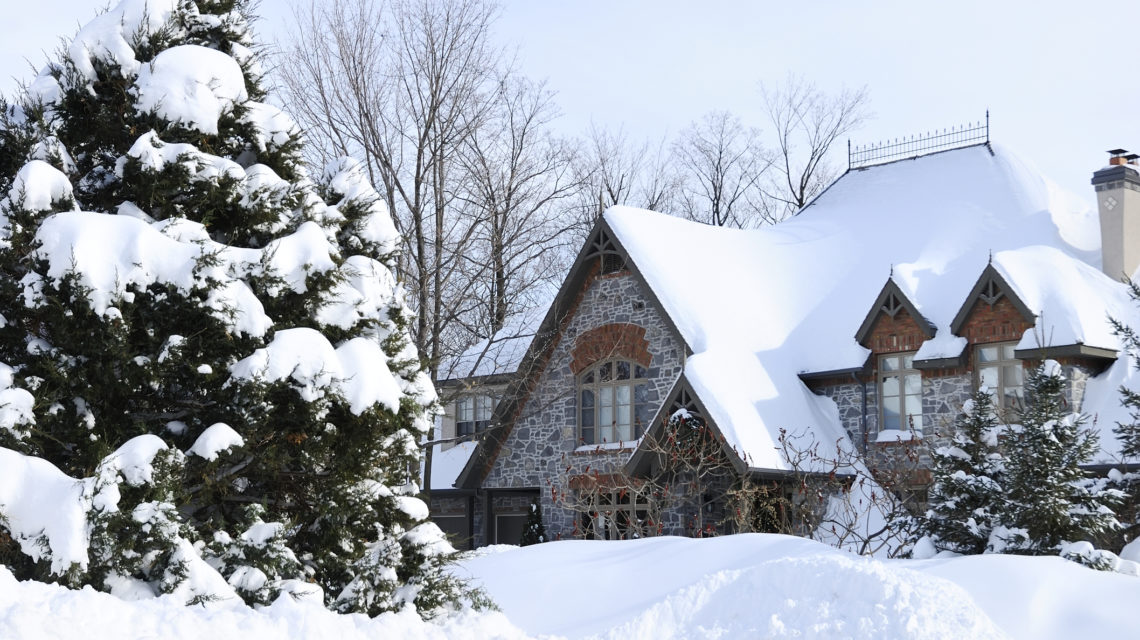
Prepare Your Home for Winter with this Easy-to-Follow Checklist
It may still be beautiful fall temperatures outside, but this is the perfect time to prepare for the inevitable winter weather. We created this winterizing a home checklist to make your preparations simple. Get a head-start on these maintenance tasks before winter weather strikes and it’s too late.
Why should you winterize your home?
Prepping your home to handle cold and wet winter weather has many benefits. Not only will you protect your home – a major investment, but you can also save money. Doing a small amount of maintenance prevents big-ticket items from needing emergency repairs. Maintenance is almost always cheaper than an emergency repair or replacement. Winterizing your home also makes it more energy efficient. You’ll save money on your heating costs. It’s a win-win.
DIY
These winterizing tasks can be completed by almost any homeowner.
- Fill gaps in siding and window frames with caulk. If you see any exterior gaps that are larger than the width of a nickel, get caulking! Leaving empty spaces can let water and cold air inside your home.
- Look for broken roof tiles with binoculars. Do a thorough visual inspection of your roof. If you see any questionable areas, then you can call in an expert to make repairs before snow can sit on the damaged roof.
- Clean leaves out of your gutters and downspouts. If you are in good physical condition and feel comfortable with heights, this can be a DIY project. Get on a sturdy ladder and clean the gutters after the last leaf has fallen. Why you’re cleaning, keep an eye out for any damaged pieces that may need repairs.
- Take out or insulate window A/C units. Store them in a dry location if the model can’t handle the winter weather. If it can, consider leaving them in place and taking extra measures to insulate the window it sits in.
- Insert storm windows and doors. Take off your screens and replace them with storm windows. These add extra insulation and protection for your windows during the winter months.
- Drain outside water pipes and faucets. These will be the first pipes to freeze in inclement weather. Turn off these faucets, drain the hoses, and protect the rest of the pipes in your home.
- Mulch your leaves instead of trashing them. Don’t just use a leaf blower to get rid of them. These have valuable nutrients for your lawn. Consider raking up some excess and then running your lawn mower over the remaining leaves.
- Reverse your ceiling fan direction. If the fans run clockwise, they will push warm air from the ceiling down into the room. Save money by keeping your thermostat lower with this trick.
Get extra energy saving tips here.
- Change batteries in smoke alarm and carbon monoxide detector. These should be changed once a year. Fall is the perfect time to do it! When you heat your home, you run a higher risk of fires and carbon monoxide build-up in the air.
- Add weather-stripping to your doors. If there are any gaps in your door, cold air and moisture can get inside. You can get a kit that includes foam strips you attach to the door. Add a door sweep to the bottom of the door for extra protection.
- Check your sump pump’s performance. Your sump pump will protect your home from flooding issues. First, look into the exterior drainage pipe and remove any debris you see. Then pour water into the sump pump basin to ensure it’s working. You’ll only need a 5-gallon bucket for this. Stay to watch the sump pump turn on, empty the basin, and turn off. If it doesn’t work, you need a replacement.
For the Professionals
We recommend outsourcing these tasks to the professionals.
Service your laundry dryer. It’s not enough to clean the lint screen after every load. Once a year you need to clean the vent that leads from the dryer to the outside of the home. This is to prevent fires and keep your dryer running efficiently.
Average cost: $95-$164
Inspect your chimney. Do you have a working fireplace? Make sure it’s in top-notch condition before using it. Chimneys can get dirty, and that dirt can cause fires.
Average cost: $124-$326
Get a check-up for your furnace or boiler. You want to know if there are any issues with your heating system before you need to turn it on. Get a technician to inspect the unit and make any necessary repairs. Book early, because these professionals get busy late in the fall!
Average cost for furnace inspection: $80-$150
Average cost for boiler inspection: $100-$200
Do you need any major repairs after going through this checklist?
If you need to repair big-ticket items, it can get expensive. If you don’t have the money saved or want to leverage your equity to take care of the cost instead, apply for a Home Equity Line of Credit! The application is simple, and you can get approved for a significant credit limit to make those repairs immediately. You can keep using the line of credit all winter long as you need it. Research HELOCs now!
-2.png?width=300&height=65&name=AFCU-logo-2019-white-sm%20(1)-2.png)